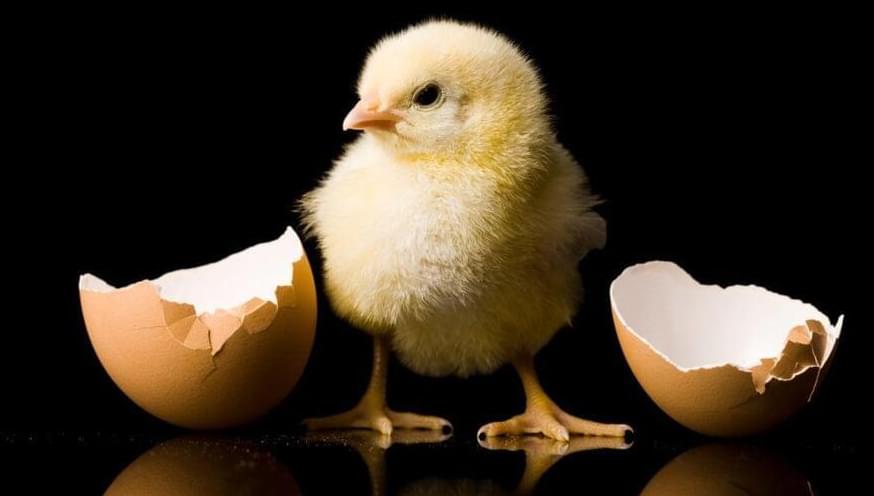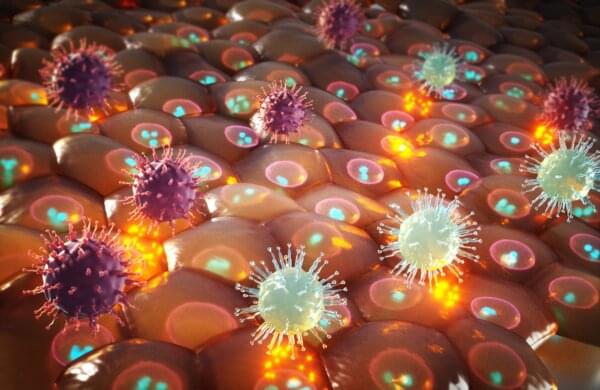Most biologists will answer confidently when asked ‘which came first, the chicken or the egg? but the answer may depend on what type of egg you’re talking about.



The viruses Kaposi sarcoma-associated herpesvirus (KSHV) and Epstein-Barr virus (EBV) have been linked to several cancers. For the first time, UNC School of Medicine scientists have discovered that these viruses use a human protein called barrier-to-autointegration factor 1, or BAF, to evade our innate immune response, allowing the viruses to spread and cause disease.
These findings, published in Nature Communications, suggest that BAF and related proteins could be therapeutic targets to prevent these viruses from spreading and leading to cancers, such as Kaposi sarcoma, non-Hodgkin lymphoma, Hodgkin lymphoma, multicentric Castleman disease, nasopharyngeal carcinoma, and gastric cancer.
“Viruses are in a constant battle with the cellular immune system, which includes the protein cyclic GMP-AMP synthase, or cGAS, which binds to viral DNA and sounds the alarm to trigger immune responses and fight the viral invaders,” said senior author Blossom Damania, Ph.D., the Boshamer Distinguished Professor of Microbiology and Immunology and member of the Lineberger Comprehensive Cancer Center. “We’ve discovered that KSHV and EBV use a different host cell protein, BAF, to prevent cGAS from sounding the alarm.”

Summary: Using advanced neuroimaging techniques, researchers discovered distant brain regions oscillate together in time.
Source: champalimaud centre for the unknown.
It’s been over 20 years since neuroimaging studies – using functional magnetic resonance imaging (fMRI), a widely-used technology to capture live videos of brain activity – have been detecting brain-wide complex patterns of correlated brain activity that appear disrupted in a wide range of neurological and psychiatric disorders.



He has never been on a leash and eats only human food.
Bobi, aged 30 years and 268 days, was crowned as the world’s oldest living dog by the Guinness World Records last week. Bobi also holds the enviable record of being officially the oldest dog to have lived on the planet.
A peaceful existence that would not have been.
Guinness World Records.
It was only two weeks ago that Spike, a 23-year-old chihuahua mix from Ohio, was named the oldest living dog. Spike’s story was quite emotional as he was founded abandoned as a 10-year-old dog in the parking lot of a grocery store. His current owner, Rita Kimball, decided to take him home, and he shot to fame after receiving Guinness recognition.

The Microsoft cofounder talked to Forbes about his work with AI unicorn OpenAI and back on Microsoft’s campus, AI’s potential impact on jobs and in medicine, and much more.
In 2020, Bill Gates left the board of directors of Microsoft, the tech giant he cofounded in 1975. But he still spends about 10% of his time at its Redmond, Washington headquarters, meeting with product teams, he says. A big topic of discussion for those sessions: artificial intelligence, and the ways AI can change how we work — and how we use Microsoft software products to do it.

Q&A platform Quora has opened up public access to its new AI chatbot app, Poe, which lets users ask questions and get answers from a range of AI chatbots, including those from ChatGPT maker, OpenAI, and other companies like Anthropic. Beyond allowing users to experiment with new AI technologies, Poe’s content will ultimately help to evolve Quora itself, the company says.
Quora first announced Poe’s mobile app in December, but at the time, it required an invite to try it out. With the public launch on Friday, anyone can now use Poe’s app. For now, it’s available only to iOS users, but Quora says the service will arrive on other platforms in a few months.
In an announcement, the company explained it decided to launch Poe as a standalone product that’s independent of Quora itself because of how quickly AI developments and changes are now taking place. However, there will be some connections between the Q&A site and Poe. If and when Poe’s content meets a high enough quality standard, it will be distributed on Quora’s site itself, where it has the ability to reach Quora’s 400 million monthly visitors, the company noted.

Magic, a startup developing a code-generating platform similar to GitHub’s Copilot, today announced that it raised $23 million in a Series A funding round led by Alphabet’s CapitalG with participation from Elad Gil, Nat Friedman and Amplify Partners. So what’s its story?
Magic’s CEO and co-founder, Eric Steinberger, says that he was inspired by the potential of AI at a young age. In high school, he and his friends wired up the school’s computers for machine learning algorithm training, an experience that planted the seeds for Steinberger’s computer science degree and his job at Meta as an AI researcher.
“I spent years exploring potential paths to artificial general intelligence, and then large language models (LLMs) were invented,” Steinberger told TechCrunch in an email interview. “I realized that combining LLMs trained on code with my research on neural memory and reinforcement learning might allow us to build an AI software engineer that feels like a true colleague, not just a tool. This would be extraordinarily useful for companies and developers.”